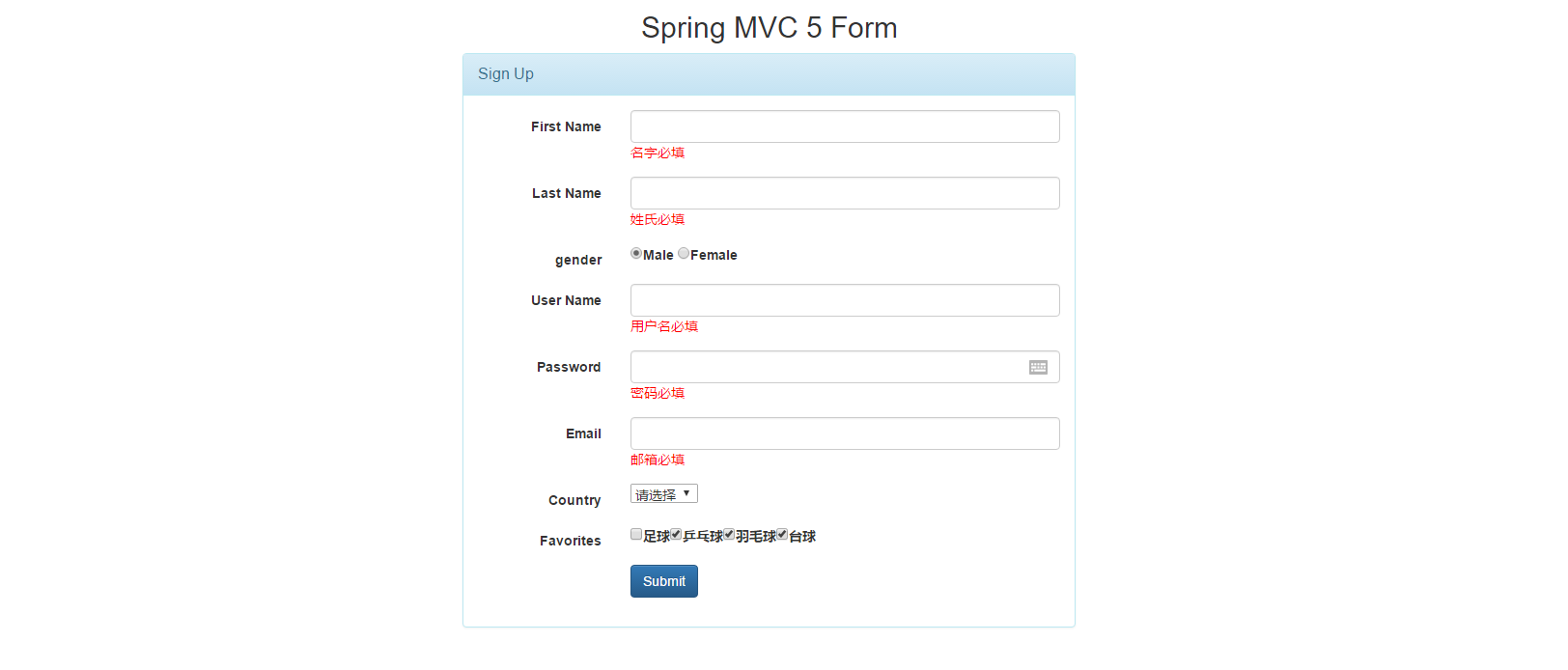Spring MVC系列之JDBC Demo(SpringBoot)(八)
前言
前面我们了解了Spring MVC的基本使用,其实和.NET或.NET Core MVC无异,只是语法不同而已罢了,本节我们将和和数据库打交道,从最基础的JDBC讲解起,文中若有错误之处,还望指正。
JDBC Demo
我们需要下载三个包:JDBC驱动包(mysql-connector-java)、spring boot启用jdbc(spring-boot-starter-jdbc)、对数据进行序列化的json包(jackson-databind),如下:
<dependency>
<groupId>mysql</groupId>
<artifactId>mysql-connector-java</artifactId>
</dependency>
<dependency>
<groupId>org.springframework.boot</groupId>
<artifactId>spring-boot-starter-jdbc</artifactId>
</dependency>
<dependency>
<groupId>com.fasterxml.jackson.core</groupId>
<artifactId>jackson-databind</artifactId>
</dependency>
接下来我们在配置文件中,通过JDBC连接MySQL数据库,如下:
spring.datasource.url = jdbc:mysql://localhost:3306/user?serverTimezone=UTC spring.datasource.username = root spring.datasource.password = root
这里需要注意的是:对于不同的JDBC驱动版本,可能会抛出如下错误,这是由于在JDBC指定版本中存在的bug,所以要么如上显式指定serverTimezone,要么添加JDBC版本
The server time zone value '�й���ʱ��' is unrecognized or represents more than one time zone. You must configure either the server or JDBC driver
(via the serverTimezone configuration property) to use a more specifc time zone value if you want to utilize time zone support
接下来我们定义对用户进行增、删、改、查的接口,如下:
public interface UserRepository { int save(User user); int update(User user); int deleteById(int id); List<User> findAll(); }
接下来我们再来看用户类,我们将对提交用户信息通过注解进行校验,同时我们对之前添加的爱好的数据类型为数组序列化为JSON后存到MySQL数据库,如下:
public class User { private ObjectMapper objectMapper = new ObjectMapper(); public User() { } public User(int userId, String firstName, String lastName, String gender, String email, String userName, String password, String country, String favoritesJson) throws JsonProcessingException { this.userId = userId; this.firstName = firstName; this.lastName = lastName; this.gender = gender; this.email = email; this.userName = userName; this.password = password; this.country = country; this.favorites = objectMapper.readValue(favoritesJson, new TypeReference<String[]>() { }); } private int userId; @NotNull(message = "名字必填") private String firstName; @NotNull(message = "姓氏必填") private String lastName; @NotNull(message = "性别必填") private String gender; @NotNull(message = "邮箱必填") @Email(message = "请输入有效的邮箱") private String email; @NotNull(message = "用户名必填") private String userName; @NotNull(message = "密码必填") private String password; private String country; public int getUserId() { return userId; } public String getFavoritesJson() { String favoritesJson = null; try { favoritesJson = objectMapper.writeValueAsString(this.favorites); } catch (JsonProcessingException ex) { } return favoritesJson; } public void setUserId(int userId) { this.userId = userId; } private String[] favorites; public String[] getFavorites() { return favorites; } public void setFavorites(String[] favorites) { this.favorites = favorites; } public String getCountry() { return country; } public void setCountry(String country) { this.country = country; } public String getFirstName() { return firstName; } public void setFirstName(String firstName) { this.firstName = firstName; } public String getLastName() { return lastName; } public String getGender() { return gender; } public void setGender(String gender) { this.gender = gender; } public void setLastName(String lastName) { this.lastName = lastName; } public String getEmail() { return email; } public void setEmail(String email) { this.email = email; } public String getUserName() { return userName; } public void setUserName(String userName) { this.userName = userName; } public String getPassword() { return password; } public void setPassword(String password) { this.password = password; } }
最后则是实现上述用户接口,这里我们使用JDBC中的参数化类(避免SQL注入)进行增删改查,如下:
@Repository public class NamedParameterJdbcUserRepository implements UserRepository { @Autowired public NamedParameterJdbcTemplate namedParameterJdbcTemplate; @Override public int save(User user) { MapSqlParameterSource mapSqlParameterSource = new MapSqlParameterSource(); mapSqlParameterSource.addValue("userName",user.getUserName()); mapSqlParameterSource.addValue("password",user.getPassword()); mapSqlParameterSource.addValue("firstName",user.getFirstName()); mapSqlParameterSource.addValue("lastName",user.getLastName()); mapSqlParameterSource.addValue("gender",user.getGender()); mapSqlParameterSource.addValue("email",user.getEmail()); mapSqlParameterSource.addValue("country",user.getCountry()); mapSqlParameterSource.addValue("favorites",user.getFavoritesJson()); return namedParameterJdbcTemplate.update( "insert into users (userName, password,firstName,lastName,gender,email,country,favorites)" + " values(:userName,:password,:firstName,:lastName,:gender,:email,:country,:favorites)", mapSqlParameterSource); } @Override public int update(User user) { return 0; } @Override public int deleteById(int id) { MapSqlParameterSource mapSqlParameterSource = new MapSqlParameterSource(); mapSqlParameterSource.addValue("userId", id); return namedParameterJdbcTemplate.update("delete from users where userId = :userId", mapSqlParameterSource); } @Override public List<User> findAll() { return namedParameterJdbcTemplate.query( "select * from users", (rs, rowNum) -> { try { return new User( rs.getInt("userId"), rs.getString("firstName"), rs.getString("lastName"), rs.getString("gender"), rs.getString("email"), rs.getString("userName"), rs.getString("password"), rs.getString("country"), rs.getString("favorites") ); } catch (JsonProcessingException e) { e.printStackTrace(); return null; } }); } }
然后在进行提交用户时,在上一节内容基础上进行改造,添加校验注解,若有错误则返回,否则提交成功后则跳转到用户列表,如下:
@RequestMapping(value = "/user", method = RequestMethod.POST) public String user(@Valid @ModelAttribute("user") User user, BindingResult bindingResult) { if (bindingResult.hasErrors()) { return "user"; } else { jdbcUserRepository.save(user); return "users"; } }
这里需要注意的是:对于空字符串即使添加了校验注解后依然会忽略,所以我们还需要初始化绑定器注解去除空字符串并对其进行校验,如下:
@InitBinder public void initBinder(WebDataBinder dataBinder) { StringTrimmerEditor stringTrimmerEditor = new StringTrimmerEditor(true); dataBinder.registerCustomEditor(String.class, stringTrimmerEditor); }
表单提交我们使用的是spring提供给我们的库,渲染用户列表,我们则是通过脚本并利用bootstrap-table实现,最终界面所呈现出的效果,如下:


总结
如上只是给出了部分重要代码,这里我已经将本节通过JDBC进行增删改查代码上传到github(https://github.com/wangpengxpy/SpringBoot),切换分支即可,后续会将每一块内容分别创建一个分支,以便供我复习和有需要的童鞋使用,本节我们到此结束,我们下节见。

为了方便大家在移动端也能看到我分享的博文,现已注册个人公众号,扫描上方左边二维码即可,欢迎大家关注,有时间会及时分享相关技术博文。
感谢花时间阅读此篇文章,如果您觉得这篇文章你学到了东西也是为了犒劳下博主的码字不易不妨打赏一下吧,让楼主能喝上一杯咖啡,在此谢过了!
如果您觉得阅读本文对您有帮助,请点一下“推荐”按钮,您的“推荐”将是我最大的写作动力!
本文版权归作者和博客园共有,来源网址:http://www.cnblogs.com/CreateMyself)/欢迎各位转载,但是未经作者本人同意,转载文章之后必须在文章页面明显位置给出作者和原文连接,否则保留追究法律责任的权利。







【推荐】国内首个AI IDE,深度理解中文开发场景,立即下载体验Trae
【推荐】编程新体验,更懂你的AI,立即体验豆包MarsCode编程助手
【推荐】抖音旗下AI助手豆包,你的智能百科全书,全免费不限次数
【推荐】轻量又高性能的 SSH 工具 IShell:AI 加持,快人一步
· .NET Core 中如何实现缓存的预热?
· 从 HTTP 原因短语缺失研究 HTTP/2 和 HTTP/3 的设计差异
· AI与.NET技术实操系列:向量存储与相似性搜索在 .NET 中的实现
· 基于Microsoft.Extensions.AI核心库实现RAG应用
· Linux系列:如何用heaptrack跟踪.NET程序的非托管内存泄露
· TypeScript + Deepseek 打造卜卦网站:技术与玄学的结合
· 阿里巴巴 QwQ-32B真的超越了 DeepSeek R-1吗?
· 【译】Visual Studio 中新的强大生产力特性
· 10年+ .NET Coder 心语 ── 封装的思维:从隐藏、稳定开始理解其本质意义
· 【设计模式】告别冗长if-else语句:使用策略模式优化代码结构